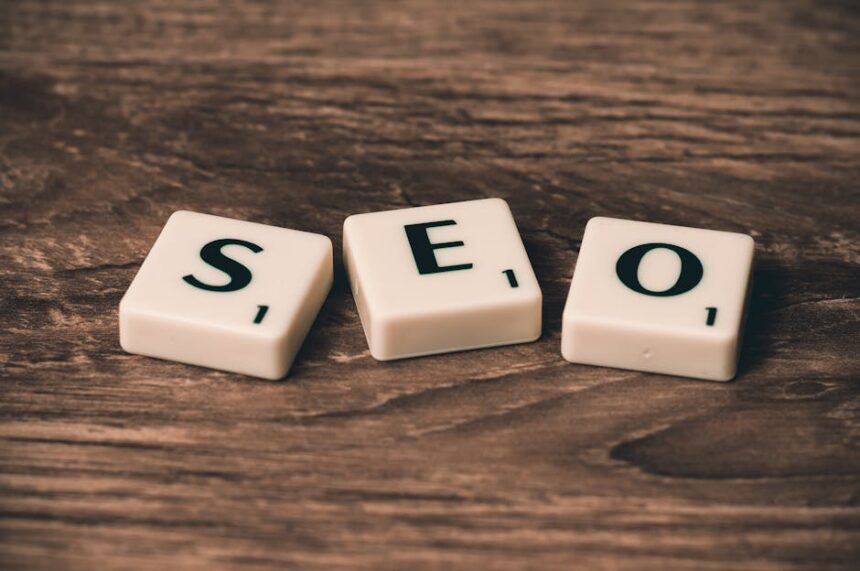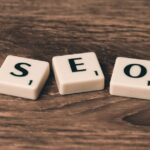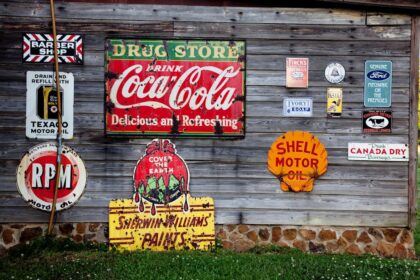Dynamic retargeting on Facebook represents a pinnacle of digital advertising efficacy, offering businesses an unparalleled opportunity to re-engage warm audiences and significantly elevate their return on ad spend (ROAS). Unlike standard retargeting, which merely shows a general ad to past visitors, dynamic retargeting serves highly personalized advertisements based on specific interactions a user had with a website or app. This hyper-personalization transforms a passive browsing experience into an active, tailored sales funnel, directly addressing the user’s previously expressed interest. The core mechanism involves a sophisticated interplay between the Facebook Pixel, a robust product catalog, and Facebook’s powerful ad delivery system, allowing advertisers to automatically display products or services a user viewed, added to their cart, or even initiated checkout for, alongside other relevant items. This intelligent recall capability drastically shortens the sales cycle and significantly boosts conversion rates by reminding potential customers of their interest and overcoming initial hesitations. Maximizing ROI through dynamic retargeting hinges on a deep understanding of its foundational components, strategic implementation of campaigns, continuous optimization, and diligent performance analysis. The strategic deployment of dynamic retargeting campaigns moves beyond simply reminding users; it’s about delivering the right message, with the right product, at the right time, to an audience already primed for conversion, thereby turning near-misses into successful transactions and substantially improving overall marketing efficiency.
Understanding the Mechanics of Dynamic Retargeting
Dynamic retargeting, often referred to as Dynamic Product Ads (DPAs) or Dynamic Creative Optimization (DCO) when applied to broader categories, operates on a principle of automated, personalized advertising. At its heart, it leverages data collected from user interactions with a brand’s digital properties to serve highly relevant product recommendations. This process is far more sophisticated than simply showing a general banner ad to anyone who visited your site. Instead, it identifies specific products or services a user engaged with, then automatically generates ads featuring those exact items, often accompanied by complementary products or special offers.
The foundational element for dynamic retargeting is the Facebook Pixel. This small piece of JavaScript code, installed on your website, acts as the primary data collector. It tracks a myriad of user actions, known as “events,” such as PageView (when a user views any page), ViewContent (when a user views a specific product page), AddToCart (when an item is added to the shopping cart), InitiateCheckout (when the checkout process begins), and Purchase (when a transaction is completed). Crucially, for dynamic retargeting, the Pixel is configured to pass specific parameters with these events, such as content_ids (the unique ID of the product viewed or added to cart), value (the price of the product), and currency. These parameters are vital because they link user actions back to specific items in your product catalog.
The second critical component is the Facebook Product Catalog, managed within Facebook Business Manager’s Catalog Manager. This catalog is a structured repository of all the products or services you wish to advertise dynamically. Each item in the catalog must have a unique ID, a title, description, image URL, price, availability, and a direct link to its product page on your website. The key is that the content_ids passed by the Pixel must precisely match the product IDs within your catalog. This synchronization allows Facebook to identify which specific product a user interacted with on your site and then dynamically pull that product’s information (image, price, name) from the catalog to populate the ad.
When a user visits your website and views a product, the Pixel fires, recording the ViewContent event along with the product’s ID. This data is sent back to Facebook. Facebook then cross-references this product ID with your uploaded product catalog. Later, when the user is browsing their Facebook or Instagram feed, Facebook’s ad delivery system can intelligently recognize that this user previously expressed interest in that specific product. It then dynamically generates an ad, pulling the product image, name, and price directly from your catalog, and presents it to the user. This highly personalized approach significantly increases the likelihood of conversion because the ad content is directly relevant to the user’s recent browsing history, eliminating the need for manual ad creation for thousands of individual products.
Furthermore, dynamic retargeting extends beyond simply showing the exact product viewed. Based on the user’s actions, it can automatically display:
- Products they viewed but didn’t add to cart.
- Products they added to cart but didn’t purchase (abandoned cart recovery).
- Products they initiated checkout for but didn’t complete.
- Related or complementary products based on items they’ve purchased or viewed, enabling cross-selling and upselling strategies.
The psychological underpinnings of dynamic retargeting’s effectiveness are rooted in principles of recency, familiarity, and personalization. By showing users products they recently interacted with, it leverages the recency bias, keeping the product top-of-mind. Familiarity builds trust and reduces the cognitive load required to process new information. Most importantly, personalization makes the ad feel directly relevant and useful to the individual, cutting through the noise of generic advertising and significantly enhancing engagement. This automated, data-driven approach ensures that your advertising budget is spent on audiences most likely to convert, leading to a substantial uplift in ROI compared to traditional, less targeted campaigns.
The Foundations: Setting Up for Dynamic Retargeting Success
Building a robust dynamic retargeting strategy requires meticulous preparation, focusing on the correct implementation of the Facebook Pixel and the optimization of your product catalog. These are the twin pillars upon which all successful dynamic retargeting campaigns rest.
1. Facebook Pixel Mastery
The Facebook Pixel is the cornerstone of all Facebook advertising, but its correct implementation is especially critical for dynamic retargeting. It’s not enough to simply install the base code; you must ensure it tracks standard events and their associated parameters accurately.
- Installation and Verification:
- Base Pixel Code: This is the foundational code snippet that should be placed in the
section of every page on your website. It allows Facebook to track general page views. - Verification: After installation, use the Facebook Pixel Helper Chrome extension to verify that the Pixel is firing correctly on all pages. It will show you which events are firing and what parameters are being passed.
- Base Pixel Code: This is the foundational code snippet that should be placed in the
- Standard Events for Dynamic Retargeting: For dynamic retargeting to function, your Pixel must fire specific standard events with accompanying parameters that link user actions to your product catalog.
**PageView**: Fires on every page load. This is useful for general website visitor retargeting but doesn’t provide product-specific data.**ViewContent**: Fires when a user views a specific product or content page.- Crucial Parameters:
content_ids(an array of the product ID being viewed),content_type(usually ‘product’ or ‘product_group’),value(the price of the product),currency(e.g., ‘USD’). - Example:
fbq('track', 'ViewContent', {content_ids: ['PROD123'], content_type: 'product', value: 99.99, currency: 'USD'});
- Crucial Parameters:
**AddToCart**: Fires when a user adds an item to their shopping cart.- Crucial Parameters: Similar to
ViewContent, includecontent_ids,content_type,value,currency. These allow you to target cart abandoners with specific items.
- Crucial Parameters: Similar to
**InitiateCheckout**: Fires when a user begins the checkout process.- Crucial Parameters: Again,
content_ids,content_type,value,currency. This targets users who were very close to purchasing.
- Crucial Parameters: Again,
**Purchase**: Fires when a transaction is successfully completed.- Crucial Parameters:
content_ids(of all purchased items),content_type,value(total order value),currency. This event is vital for excluding purchasers from abandoned cart campaigns and for creating upsell/cross-sell audiences.
- Crucial Parameters:
- Custom Events (for Granular Tracking): While standard events cover most scenarios, custom events allow for more nuanced tracking. For instance, if you have a multi-step form, you could track
FormStep1Complete,FormStep2Complete, etc. While not directly tied to product catalogs, they can inform broader dynamic creative optimization or provide signals for audiences to exclude. - Event Parameters: The quality of your event parameters directly impacts the precision of your dynamic ads. Ensure
content_idsprecisely match your product catalog IDs. Incorrect or missing parameters are common reasons for dynamic ads failing to deliver or showing irrelevant products. Using a data layer, if available on your e-commerce platform, can simplify accurate parameter passing. - Connecting Pixel to Catalog: Within Facebook Business Manager, navigate to Events Manager. Under your Pixel’s settings, you’ll find an option to “Connect Data Sources.” Here, you must associate your Pixel with the relevant product catalog. This linkage is what allows Facebook to match user actions to specific products in your inventory.
2. Facebook Product Catalog (Catalog Manager)
The product catalog is the central database from which dynamic ads pull product information. Its accuracy and completeness are paramount.
- Importance for DPAs: Without a well-structured and up-to-date catalog, dynamic ads cannot display personalized product information. The catalog provides the imagery, pricing, and descriptions for each item.
- Setting Up Your Catalog:
- Manual Upload: Suitable for smaller inventories, you can manually input product details or upload a CSV/XML file.
- Data Feed (Most Common and Recommended for E-commerce): For larger inventories or those with frequent changes, an automated data feed is essential. This is typically a URL that Facebook can regularly scrape (e.g., daily) to update your product information. Most e-commerce platforms (Shopify, WooCommerce, Magento, BigCommerce) have plugins or built-in functionalities to generate these feeds.
- Google Shopping Feed: Often, the same XML feed used for Google Shopping can be adapted for Facebook.
- Product Feed Optimization: The quality of your product feed directly impacts ad performance.
- Required Fields:
id: Unique identifier for each product. MUST matchcontent_idsfrom your Pixel.title: Clear, descriptive product name.description: Detailed product information.image_link: High-quality URL to the product image.availability: (in stock, out of stock, pre-order, discontinued). Crucial for avoiding showing unavailable products.price: Current price.brand: Your brand name.link: Direct URL to the product page on your website.
- Recommended Fields (for enhanced targeting and ad quality):
condition: (new, used, refurbished).gtin/mpn/brand: Global Trade Item Number, Manufacturer Part Number, or brand name. Helps Facebook understand your products better.product_type: Your internal product categorization (e.g., Apparel > T-Shirts > Men’s T-Shirts).gender,age_group,color,size: Essential for apparel and accessories, allowing for more specific targeting and ad relevance.shipping: Shipping costs and regions.
- Data Quality: Ensure all URLs are valid, images load quickly, prices are accurate, and descriptions are compelling. Outdated or incorrect information leads to poor ad performance and a frustrating user experience.
- Required Fields:
- Troubleshooting Common Catalog Issues:
- Missing Fields: Check your feed settings and ensure all required fields are populated.
- Invalid URLs: Verify all
image_linkandlinkURLs are correct and accessible. - ID Mismatch: The most common culprit. Ensure
content_idsfrom your Pixel events precisely match theidfield in your catalog. Case sensitivity and extra spaces can cause issues. - “Items with issues”: Facebook’s Catalog Manager provides diagnostics for product issues. Regularly review and resolve these. Common problems include low-resolution images, missing prices, or invalid
availabilitystatus. - Feed Update Frequency: Ensure your feed updates frequently enough to reflect inventory and price changes, especially for fast-moving products.
3. Audience Segmentation for Retargeting
Once your Pixel and Product Catalog are flawlessly integrated, the next step is to define your retargeting audiences. Effective segmentation ensures that your dynamic ads are shown to the right people at the right stage of their buying journey. These audiences are built using the data collected by your Pixel.
- Website Visitors:
- All Website Visitors: The broadest retargeting audience. Useful for general brand awareness or introducing a wide range of products.
- Visitors by Time Spent: Target the top 25% or 10% of visitors by time spent on site, indicating higher engagement.
- Visitors of Specific Pages: Target users who visited particular landing pages but didn’t view specific products (e.g., blog readers, service page visitors).
- Product Viewers (ViewContent):
- Viewed Specific Products: The core of dynamic retargeting. Target users who viewed products but didn’t add to cart or purchase. You can define look-back windows (e.g., last 7, 14, 30 days).
- Viewed Specific Categories: Group products into sets within your catalog and target users who viewed items from a particular category (e.g., “all users who viewed men’s shoes”).
- Abandoned Cart Users (AddToCart):
- Added to Cart but Not Purchased: This is one of the highest-converting retargeting audiences. Target users who added items to their cart but did not complete the purchase within a specific timeframe (e.g., 1-3 days for immediate follow-up, 7 days for a broader window).
- Initiated Checkout Abandoners (InitiateCheckout):
- Initiated Checkout but Not Purchased: An even hotter audience than simple cart abandoners. These users were literally steps away from buying. Target them with strong urgency or last-ditch offers.
- Past Purchasers (Purchase):
- All Purchasers: Essential for exclusion from “abandoned cart” campaigns to avoid showing irrelevant ads.
- Specific Product Purchasers: Use this for cross-sell or upsell campaigns. For example, if someone bought a camera, show them lenses or tripods. If they bought a basic service, show them an upgrade.
- Engagers with Facebook/Instagram Content: While not direct website visitors, these users showed interest in your brand on social media (e.g., video viewers, page likers, post engagers). You can use these for broader awareness or as a warmer audience for initial outreach before dynamic retargeting kicks in.
- Custom Audiences from Customer Lists: Upload customer email lists or phone numbers to create audiences. This is powerful for re-engaging dormant customers, segmenting VIPs, or excluding current customers from prospecting campaigns. While not directly tied to dynamic product ads, it complements the broader retargeting strategy.
- Lookalike Audiences: While primarily for prospecting, Lookalike Audiences derived from high-value custom audiences (e.g., top 10% of purchasers) can be used to find new potential customers who resemble your best existing ones, acting as a feeder for your dynamic retargeting efforts.
By meticulously setting up your Pixel, optimizing your Product Catalog, and segmenting your audiences, you lay the groundwork for highly effective and profitable dynamic retargeting campaigns that maximize your Facebook ad ROI. This detailed preparation ensures that Facebook has the necessary data to accurately identify user intent and serve the most relevant ads, turning browsers into buyers.
Crafting High-Converting Dynamic Retargeting Campaigns
Once your foundation (Pixel, Catalog, Audiences) is solid, the next phase involves designing and implementing your dynamic retargeting campaigns for maximum conversion. This requires a strategic approach to campaign objectives, ad set configurations, and compelling dynamic ad creative.
1. Campaign Structure and Objectives
For dynamic retargeting, Facebook offers specific campaign objectives tailored to e-commerce and lead generation. Choosing the right objective is critical as it guides Facebook’s algorithm in optimizing for your desired outcome.
- Catalog Sales Objective (Most Recommended): This objective is specifically designed for dynamic product ads. It allows you to select your product catalog and then automatically show relevant products to users based on their browsing history. Facebook’s algorithm is optimized to find users most likely to purchase from your catalog. This objective is ideal for driving direct sales from your e-commerce store.
- Conversions Objective: While Catalog Sales is specialized, the Conversions objective can also be used, especially if your goal isn’t just product sales but rather specific actions like lead form submissions or custom events that aren’t tied to a traditional product catalog (e.g., bookings, appointments). You would still configure dynamic creative, but the primary optimization would be for the
Purchaseevent (or your chosen conversion event) rather than catalog-specific optimization. - Considerations:
- Sales Focus: The Catalog Sales objective is explicitly built for high-volume e-commerce sales based on product feeds.
- Lead Generation/Service Businesses: If your business offers services or unique products not suited for a standard product feed (e.g., custom-built homes), you might use the Conversions objective and leverage Dynamic Creative Optimization (DCO) with a broader range of assets rather than a strict product catalog. However, for true “dynamic retargeting” as understood by showing specific past-viewed items, a robust product catalog is indispensable.
2. Ad Set Strategy
The ad set level is where you define your budget, targeting (audiences), placements, and bidding strategy. Meticulous configuration here directly impacts your campaign’s efficiency and reach.
- Budgeting (CBO vs. ABO):
- Campaign Budget Optimization (CBO): Recommended for dynamic retargeting campaigns with multiple ad sets (e.g., different audience segments like cart abandoners vs. product viewers). CBO allows Facebook to automatically distribute your budget across your ad sets in real-time to maximize overall campaign performance, shifting spend to the audiences and ad sets that are performing best. This is particularly effective for maximizing ROAS.
- Ad Set Budget Optimization (ABO): Useful if you want precise control over each ad set’s spend, or for smaller campaigns with fewer ad sets. However, it requires more manual monitoring and adjustments to ensure budget is allocated efficiently.
- Bidding Strategies:
- Lowest Cost (Default): Facebook bids to get you the most conversions for your budget. Often a good starting point.
- Cost Cap: You set a maximum average cost per conversion. Facebook tries to stay below or at this average. Useful when you have a target CPA in mind.
- Bid Cap: You set the maximum bid Facebook can make in the auction. This gives you more control over individual bid prices but can limit delivery if your cap is too low. Generally, stick to Lowest Cost or Cost Cap for dynamic retargeting to ensure delivery and optimize for conversions.
- Placement Selection:
- Automatic Placements (Recommended): Facebook distributes your ads across all available placements (Facebook Feed, Instagram Feed, Audience Network, Messenger, Stories, Reels) where they are most likely to perform well. This allows the algorithm maximum flexibility to find the most cost-effective conversions.
- Manual Placements: If you have data indicating certain placements consistently underperform for your dynamic ads, or if you want to explicitly target specific high-value placements (e.g., Instagram Stories for visually appealing products), you can select them manually. However, this often increases costs as it restricts Facebook’s optimization.
- Schedule and Frequency Capping:
- Schedule: Typically, dynamic retargeting runs continuously. You can set specific start/end dates if you have a seasonal promotion.
- Frequency Capping (Less Common with Dynamic, but Important to Monitor): While Facebook’s algorithm generally tries to optimize frequency, for very small retargeting audiences, you might experience ad fatigue (users seeing your ad too often). Monitor your frequency metric in your reports. If it gets too high (e.g., >3-4 per week), consider expanding your audience window or refreshing your creative. Facebook often handles this well with the Catalog Sales objective due to product rotation.
3. Dynamic Ad Creative Optimization
This is where your product catalog truly shines, allowing for hyper-personalized ad experiences.
- Product Set Selection:
- All Products: Show all products from your catalog.
- Specific Product Sets: Create custom product sets within Catalog Manager. This is crucial for:
- Abandoned Cart: Target cart abandoners with the specific items they left behind.
- Category-Specific Retargeting: If a user viewed “women’s shoes,” show them only women’s shoes from your catalog.
- Upsell/Cross-sell: Show related products (e.g., accessories for a purchased item).
- Discounted Items: Create a product set of only sale items and target specific audiences with a discount offer.
- Dynamic Ad Formats:
- Carousel (Most Common & Effective): Displays multiple product cards in a scrollable format. Each card can feature a different product, or the same product with different angles/offers. Ideal for showcasing a range of products or variations of a single product.
- Single Image/Video: A single product image or video. Less dynamic in terms of product variety, but can be powerful for highlighting a single, high-value abandoned item.
- Collection: A full-screen, mobile-first experience that combines a main image/video with a grid of products below it. When clicked, it opens instantly into a full-screen shoppable experience, leading to your website. Excellent for mobile users.
- Dynamic Creative Elements (Personalization is Key!):
- Primary Text: Use compelling copy that addresses the user’s stage in the funnel. Crucially, leverage dynamic text placeholders:
{{product.name}}: Inserts the product name directly from your catalog.{{product.price}}: Inserts the product price.{{product.description}}: Inserts the product description.{{product.brand}}: Inserts the product brand.- Example for Abandoned Cart: “Don’t miss out on your {{product.name}}! It’s still waiting for you. Get yours for just {{product.price}}.”
- Example for Product Viewer: “Loved this? We think you’ll love {{product.name}}! Explore more.”
- Headline: Short, punchy, and benefit-oriented. Can also use dynamic placeholders. “Complete Your Order,” “Still Interested in {{product.name}}?”, “Your Cart Awaits.”
- Description: Additional details, social proof, urgency, or specific offers (e.g., “Free shipping on orders over $50”).
- Call to Action (CTA) Button: Choose the most appropriate CTA:
Shop Now,Learn More,View Products,Buy Now.Shop Nowis generally best for e-commerce conversions. - Image/Video: Ensure your product images in the catalog are high-quality, clear, and visually appealing. For video, consider dynamic video creation tools that can generate product videos from your catalog data.
- Primary Text: Use compelling copy that addresses the user’s stage in the funnel. Crucially, leverage dynamic text placeholders:
- Overlay Customization: Facebook allows you to add custom frames or overlays to your product images within dynamic ads. This is excellent for:
- Displaying Price: “Only {{product.price}}”
- Highlighting Discounts: “Save {{product.sale_price}}!” or “X% Off”
- Adding Brand Logos: Reinforce brand identity.
- Urgency: “Limited Stock!”
4. Audience Targeting within Ad Sets
This is where you marry your carefully defined audiences with the dynamic creative, creating hyper-relevant ad experiences. For each ad set, you’ll select a specific audience and configure the dynamic ad to match.
- Abandoned Cart Recovery:
- Audience: Website visitors who performed
AddToCartbut NOTPurchasewithin a specific window (e.g., last 3 days, last 7 days). Exclude anyone who completed a purchase recently. - Product Set: Target products in “Added to Cart” event.
- Messaging: Focus on urgency, reminders, or address common objections. Consider offering a small discount (e.g., 5-10% off, free shipping) if the user is hesitant. “Still thinking about it? Here’s 10% off your cart.”
- Audience: Website visitors who performed
- Product Viewers (Non-Cart):
- Audience: Website visitors who performed
ViewContentbut NOTAddToCartorPurchasewithin a specific window (e.g., last 7-14 days). - Product Set: Target products in “Viewed” event.
- Messaging: Gentle reminder, highlighting features/benefits, social proof. “Loved this? Discover more about {{product.name}}.”
- Audience: Website visitors who performed
- Cross-Sell/Upsell:
- Audience: Past purchasers (e.g.,
Purchaseevent in the last 30-180 days). - Product Set: Create a custom product set of complementary items or higher-value upgrades to what they previously bought. Facebook can even suggest related products dynamically.
- Messaging: “Enhance your [previous purchase] with these accessories,” or “Ready for an upgrade?”
- Audience: Past purchasers (e.g.,
- Broad Retargeting (All Website Visitors):
- Audience: All website visitors (e.g., last 30-60 days), excluding recent purchasers.
- Product Set: Can be set to “All Products” or a selection of your best-sellers/new arrivals.
- Messaging: General brand reminder, showcase popular items, or highlight new collections.
- Exclusion Lists: Always exclude audiences who have already converted or are no longer relevant to your campaign goals.
- Recent Purchasers: Exclude them from abandoned cart campaigns.
- Engaged Leads: If you’re a service business, exclude leads who have progressed to a certain stage (e.g., booked a consultation).
- Existing Customers: For acquisition campaigns, exclude your entire customer list.
By thoughtfully structuring your campaigns, optimizing your ad sets, and leveraging the power of dynamic creative with precise audience targeting, you can create a highly efficient and profitable dynamic retargeting machine on Facebook, significantly boosting your ROI. The ability to automatically show the right product to the right person at the right time is the core advantage that positions dynamic retargeting as a cornerstone of modern digital advertising.
Advanced Dynamic Retargeting Strategies and Optimization
Beyond the foundational setup, unlocking the full potential of dynamic retargeting for maximal ROI requires implementing advanced strategies, rigorous testing, and continuous performance analysis. These techniques refine your targeting, personalize messaging even further, and ensure your campaigns remain effective over time.
1. Sequential Retargeting Funnels
Instead of a single “retargeting” campaign, envision a multi-stage funnel where users receive different messages and offers based on their depth of engagement and time elapsed since their last interaction. This highly sophisticated approach nurtures leads more effectively.
- Tiered Approach Based on Engagement Depth:
- Tier 1 (High Intent – Immediate Follow-up):
- Audience:
InitiatedCheckoutbut notPurchase(last 1-2 days), orAddToCartbut notPurchase(last 1 day). - Messaging: Urgent reminder, direct call to action, perhaps a small incentive (e.g., “Complete your purchase and get free expedited shipping!”). Focus on the exact products abandoned.
- Ad Format: Carousel or Collection for specific abandoned items.
- Audience:
- Tier 2 (Medium Intent – Gentle Nudge):
- Audience:
AddToCartbut notPurchase(last 3-7 days), orViewContentbut notAddToCart(last 1-3 days). - Messaging: Reiterate benefits, address common objections (e.g., “Unsure about sizing? Check our size guide!”), social proof (reviews), or a slightly stronger offer (e.g., 5-10% off their cart).
- Ad Format: Carousel showcasing abandoned items and perhaps related best-sellers.
- Audience:
- Tier 3 (Lower Intent – Re-engagement/Inspiration):
- Audience:
ViewContentbut notAddToCart/Purchase(last 7-14 days), or all website visitors (last 30-60 days) excluding recent purchasers. - Messaging: Focus on brand story, new arrivals, popular categories, seasonal collections, or general value proposition. Less about specific abandoned items, more about re-sparking interest.
- Ad Format: Carousel featuring product sets like “new arrivals,” “best sellers,” or “recommended for you.”
- Audience:
- Exclusions: Crucially, each subsequent tier must exclude audiences from previous, higher-intent tiers to prevent message overlap and ad fatigue. For example, Tier 2 should exclude those in Tier 1 who already converted, and Tier 3 should exclude those in Tier 1 and 2 who converted or are still in active higher-tier campaigns.
- Tier 1 (High Intent – Immediate Follow-up):
2. Value-Based Retargeting
Not all customers are created equal. Value-based retargeting segments audiences based on their potential or past lifetime value (LTV), allowing you to allocate budget and offers accordingly.
- Using LTV or Purchase History to Segment:
- High-Value Purchasers: Identify your top X% of customers by total spend or frequency of purchase.
- Segment Creation: Upload these lists as Custom Audiences.
- Targeting: Show these segments exclusive early access to new collections, special discounts, loyalty programs, or higher-tier products/services.
- Messaging: Emphasize exclusivity and appreciation. “As a valued customer, here’s a sneak peek…”
- Offering Higher Discounts/Benefits to High-Value Customers: If you’re running a general discount for cart abandoners, consider a higher discount for abandoners who are also classified as high-potential customers based on their past browsing behavior or previous interactions. This maximizes the return on your discount investment.
3. Dynamic Ads for Broad Audiences (DABA)
While primarily a prospecting strategy, DABA leverages your product catalog to find new potential customers who are similar to your existing customers or those who have shown interest in products similar to yours. This acts as a powerful feeder for your dynamic retargeting campaigns.
- How it Works: Facebook uses signals beyond your pixel data (e.g., user interests, demographics, behaviors on Facebook) to show highly relevant products from your catalog to users who haven’t yet visited your site.
- Relevance to Retargeting: DABA brings new, qualified traffic to your site, expanding the pool of users who will then be eligible for traditional dynamic retargeting. It ensures a continuous influx of potentially interested users into your retargeting funnels.
- Strategy: Run DABA campaigns alongside your retargeting efforts to consistently grow your audience base.
4. Integrating Offline Conversions
For businesses with both online and offline sales (e.g., retail stores, automotive dealerships), integrating offline conversion data enriches your customer profiles and improves retargeting accuracy.
- Uploading Offline Event Data: You can upload CSV files of offline conversions (e.g., in-store purchases, phone inquiries) to Facebook’s Events Manager. Match these with your pixel data using identifiers like email, phone number, or Facebook user ID.
- Enriching Customer Profiles: This data allows Facebook to understand the full customer journey, optimizing ad delivery for online-to-offline conversions and building more accurate lookalike audiences. You can then exclude users who converted offline from online retargeting campaigns.
5. A/B Testing in Dynamic Retargeting
Continuous A/B testing is crucial for optimizing dynamic retargeting performance, as even small changes can significantly impact ROI.
- Testing Primary Text: Experiment with different messaging angles (urgency, benefit-driven, question-based, social proof).
- Testing Headlines: Short, punchy headlines versus descriptive ones.
- Testing CTAs:
Shop Nowvs.Learn Morevs.View Products. - Testing Different Offers: 5% off vs. free shipping vs. buy-one-get-one. Test which incentives resonate best with different retargeting segments.
- Testing Audience Windows: Is a 3-day abandoned cart window more effective than 7 days? Does extending product viewer retargeting to 30 days still yield results?
- Testing Ad Formats: Carousel vs. Collection vs. Single Image for different product sets or audience segments.
- Testing Overlay Customization: Does displaying the discount or price directly on the image improve CTR and conversion?
- Methodology: Use Facebook’s A/B test feature (in Ads Manager) to ensure statistically significant results. Test one variable at a time.
6. Frequency Management and Ad Fatigue
Showing ads too often to the same audience leads to ad fatigue, reduced CTR, and increased CPMs. Dynamic retargeting can sometimes suffer from this due to smaller, highly targeted audiences.
- Monitoring Frequency Metrics: Regularly check the “Frequency” metric in your Ads Manager reports. A frequency above 3-4 for a short-duration campaign, or a consistently high frequency for ongoing campaigns, indicates potential fatigue.
- Implementing Frequency Caps: While Facebook generally optimizes, for very specific, small audiences, you might manually set a frequency cap at the ad set level (e.g., 1 impression per user per day) to prevent over-saturation.
- Refreshing Creative: Regularly update your primary text, headlines, and even the ad overlays. Even if the product images are dynamic, the surrounding copy can become stale.
- Excluding Recent Purchasers: Always ensure purchasers are excluded immediately from abandoned cart or product viewer campaigns to avoid showing them irrelevant ads right after they’ve bought something.
7. Leveraging Custom Conversions
Custom conversions allow you to define more specific actions beyond standard events as “conversions” for optimization purposes.
- Defining Specific Actions: For example, if a user lands on a “Thank You for Your Order” page, you can define this as a
Purchasecustom conversion, even if your standard Pixel event forPurchaseisn’t firing perfectly. - More Precise Tracking and Optimization: This gives you finer control over what Facebook optimizes for, especially if your sales funnel has unique steps or if you want to track specific milestones (e.g., “demo booked” or “account created”). You can then optimize your dynamic ad campaigns directly for these custom conversion events.
8. Reporting and Analysis for ROI Maximization
Data analysis is paramount for understanding what’s working and identifying areas for improvement.
- Key Metrics:
- ROAS (Return on Ad Spend): Your ultimate ROI metric. (Revenue from Ads / Ad Spend). Aim for a ROAS that makes your campaigns profitable (e.g., 3x, 4x, or higher).
- CPA (Cost Per Acquisition/Conversion): How much it costs you to get one conversion. Compare this to your product’s profit margin.
- CTR (Click-Through Rate): Indicates how engaging your ads are. Low CTR might signal ad fatigue or irrelevant creative.
- Frequency: As discussed, monitor to prevent fatigue.
- CPM (Cost Per Mille/Thousand Impressions): How much it costs to show your ad 1000 times. High CPM can indicate audience competition or poor ad relevance.
- Conversion Rate: (Conversions / Clicks) or (Conversions / Impressions).
- Adds to Cart, Initiate Checkouts: Monitor these upstream metrics to see if your top-of-funnel retargeting is effective.
- Attribution Models: Understand how Facebook attributes conversions.
- Default: Often 7-day click and 1-day view. This means a conversion is attributed to your ad if a user clicked it within 7 days or viewed it within 1 day before converting.
- Compare Models: In Ads Manager, you can compare performance across different attribution windows (e.g., 28-day click, 28-day view) to get a fuller picture of your ads’ influence, especially for longer sales cycles.
- Breaking Down Performance:
- By Ad Set: Identify which audience segments are most profitable (e.g., cart abandoners vs. product viewers).
- By Audience: Analyze specific audience performance.
- By Creative: Which dynamic ad elements (primary text, headline, overlay) contribute most to conversions?
- By Placement: Are certain placements more efficient than others?
- By Product Set: Which product categories or specific products are driving the most sales via dynamic ads? This can inform product development and catalog optimization.
- Identifying Bottlenecks and Opportunities:
- High
ViewContentbut lowAddToCartfor a product? Maybe the product page needs optimization or the price is a barrier. - High
AddToCartbut lowInitiateCheckout? Look at your cart page for friction. - High
InitiateCheckoutbut lowPurchase? Optimize your checkout flow. - A high-performing product set in dynamic ads? Consider pushing it more in prospecting campaigns.
- Low ROAS for a specific retargeting audience? Re-evaluate the offer or exclude them.
- High
Troubleshooting and Common Pitfalls
Even with careful setup, dynamic retargeting campaigns can encounter issues. Proactive troubleshooting and awareness of common pitfalls are crucial for sustained success.
1. Pixel Firing Issues
- Symptoms: Low audience sizes for website custom audiences, “no data” warnings in Events Manager, or missing conversion events.
- Troubleshooting:
- Facebook Pixel Helper: Use the Chrome extension to check if the Pixel is firing on all relevant pages and if the correct standard events (especially
ViewContent,AddToCart,InitiateCheckout,Purchase) are firing with the necessary parameters (content_ids,value,currency). - Events Manager Diagnostics: Facebook’s Events Manager often provides warnings and recommendations for Pixel issues. Pay attention to “server-side events” recommendations for improved data reliability.
- ID Mismatch: The
content_idspassed by your Pixel must exactly match theidfield in your product catalog. This is the single most common cause of dynamic ads not showing specific products. Check for leading/trailing spaces, case sensitivity, or incorrect formatting. - Delayed Events: Ensure events fire immediately upon user action, not on page load if the action is interactive (e.g., clicking “add to cart”).
- Blocked by Ad Blockers: While Facebook continually works on this, some users may have ad blockers that prevent the Pixel from firing. This is largely unavoidable but can be mitigated by implementing server-side API solutions (Conversions API).
- Facebook Pixel Helper: Use the Chrome extension to check if the Pixel is firing on all relevant pages and if the correct standard events (especially
2. Catalog Errors
- Symptoms: Products missing from ads, incorrect product information displayed, ads showing “unavailable” items, or ads not delivering.
- Troubleshooting:
- Catalog Manager Diagnostics: This is your best friend. It highlights specific errors for individual products or the entire feed (e.g., missing images, invalid prices, broken links,
availabilitystatus issues). - Feed Health Check: Regularly verify that your data feed URL is accessible to Facebook and that it’s updating on schedule.
- Required Fields: Ensure all required fields (
id,title,description,image_link,availability,price,link) are correctly populated and meet Facebook’s specifications. - Image Quality: Low-resolution, blurry, or watermarked images can lead to disapproval or poor performance.
- Price and Availability Sync: If prices or stock levels change frequently, ensure your feed updates often enough to reflect this. Showing an out-of-stock product is a frustrating user experience.
- Catalog Manager Diagnostics: This is your best friend. It highlights specific errors for individual products or the entire feed (e.g., missing images, invalid prices, broken links,
3. Low Match Rates for Custom Audiences
- Symptoms: Uploaded customer lists (emails, phone numbers) result in a very small audience size.
- Troubleshooting:
- Data Formatting: Ensure your data matches Facebook’s required format for hashing (e.g., all lowercase, no leading/trailing spaces, no special characters).
- Data Type: Only upload accepted identifiers (email, phone, first name, last name, city, state, zip, country, date of birth, gender, external ID).
- Hashing: Facebook requires data to be hashed before upload (using SHA256). Many tools do this automatically, but confirm if you’re doing it manually.
- Data Quality/Freshness: The quality and recency of your customer data impact match rates. Old or inaccurate data will match poorly.
4. Ad Set Delivery Issues
- Symptoms: Ads not spending budget, very low impressions, “learning limited” status.
- Troubleshooting:
- Audience Size: Is your retargeting audience too small? If you target a very niche group with a short look-back window, delivery may be limited. Consider expanding your look-back window (e.g., 7 days to 14 days) or broadening your audience (e.g., from
AddToCarttoViewContent). - Budget: Is your daily budget too low for the audience size or bidding strategy? Facebook might struggle to find conversions efficiently.
- Bidding Strategy: A very restrictive bid cap or cost cap can limit delivery. If delivery is low, try increasing the cap or switching to Lowest Cost.
- Creative Fatigue: If frequency is high and CTR is low, your ads may be suffering from fatigue. Refresh your ad copy and/or overlays.
- Ad Rejection: Check your Ad Account Quality for rejected ads. Common reasons include misleading claims, prohibited content, or too much text in images (though this is less of a concern with dynamic product ads).
- Audience Size: Is your retargeting audience too small? If you target a very niche group with a short look-back window, delivery may be limited. Consider expanding your look-back window (e.g., 7 days to 14 days) or broadening your audience (e.g., from
5. High Frequency, Low CTR
- Symptoms: Users seeing your ads too often, leading to decreased engagement and higher costs.
- Troubleshooting:
- Audience Expansion: If possible, expand your retargeting audience by increasing the look-back window (e.g., 7 days to 14 days) or including a slightly broader segment (e.g., all website visitors).
- Frequency Cap: Consider setting a manual frequency cap at the ad set level, though Facebook’s algorithm often manages this well.
- Creative Refresh: This is the most effective solution. Change your primary text, headlines, and calls to action regularly. Test different angles or offers.
- Exclusions: Ensure you’re rigorously excluding recent purchasers or those who have completed a desired action to avoid showing them irrelevant ads.
- Sequential Retargeting: Implement the funnel approach discussed earlier, showing different messages at different stages, which inherently manages frequency by cycling through different creative.
6. Misunderstanding Attribution
- Symptoms: Discrepancies between Facebook’s reported conversions and your internal analytics, or difficulty understanding which campaigns are truly driving sales.
- Troubleshooting:
- Attribution Windows: Understand Facebook’s default attribution window (typically 7-day click, 1-day view) and how it differs from other platforms (e.g., Google Analytics’ last-click non-direct).
- Compare Models: Use Facebook’s
Customize Columnsfeature in Ads Manager to view conversions under different attribution windows (e.g., 28-day click, 28-day view) to get a broader view of ad influence. - Conversions API: For more robust and accurate tracking that bypasses browser limitations and ad blockers, implement Facebook’s Conversions API. This sends conversion data directly from your server to Facebook, enhancing data quality for optimization.
- Server-Side Tracking: For businesses serious about data accuracy, server-side tracking provides a more reliable source of truth by capturing events independent of browser-side pixels.
By proactively addressing these potential issues and continuously optimizing your dynamic retargeting campaigns, businesses can ensure they are maximizing their Facebook ad ROI and driving consistent, high-quality conversions. The power of dynamic retargeting lies not just in its initial setup, but in the ongoing vigilance and refinement of its various components to adapt to audience behavior and market changes.











